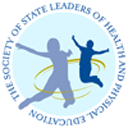The Society Is Seeking Applicants for Executive Director |
Welcome to The Society!
The Society utilizes advocacy, partnerships, professional development and resources to build the capacity of school health leaders to implement effective health education and physical education policies and practices that support success in school, work and life.
|
Why Become a Member?
WE CAN HELP! |


















